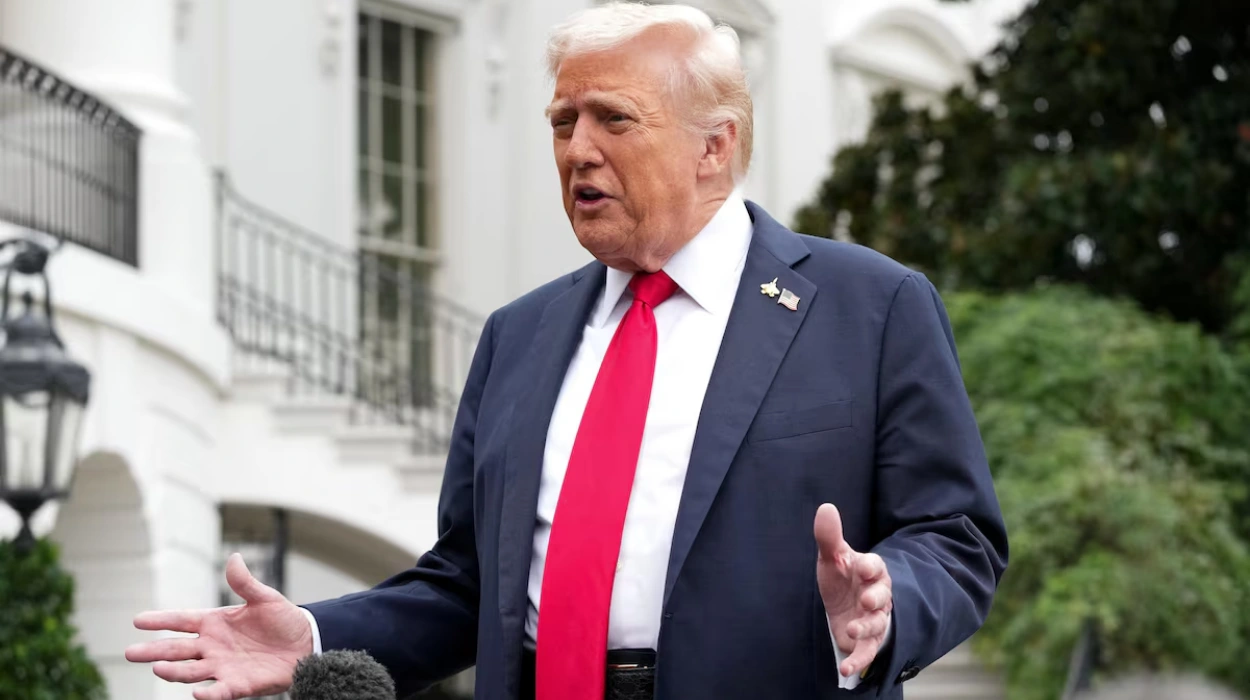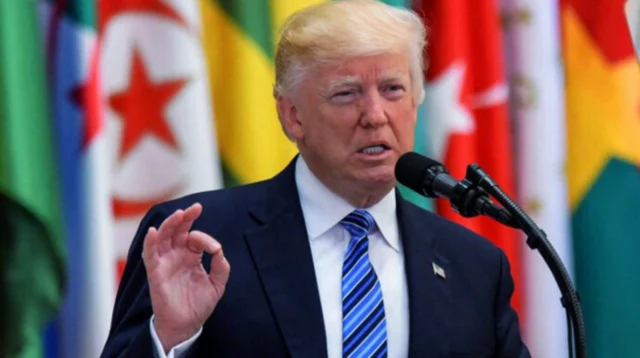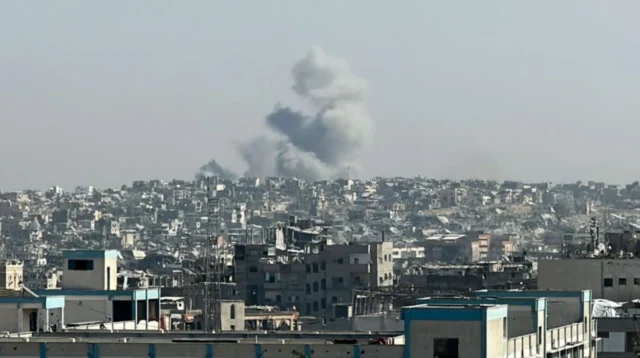On October 1, 2025, U.S. President Donald Trump announced a decisive ultimatum directed at Hamas: accept a 20-point peace plan by Sunday, October 5, at 6 p.m. Washington time or face what he termed “all HELL, like no one has ever seen before.” The warning, posted on Trump’s Truth Social account, underscored his administration’s latest effort to bring an end to nearly two years of devastating conflict in Gaza.
The peace proposal, crafted in consultation with Israeli Prime Minister Benjamin Netanyahu, outlines a phased ceasefire and hostage exchange mechanism. It calls for the release of 72 Israeli hostages held by Hamas in return for several hundred Palestinian detainees, some of whom have been held without charge under administrative detention laws. The plan further stipulates a phased Israeli military withdrawal from Gaza, full disarmament of Hamas, and the establishment of an internationally supervised transitional governing authority to oversee reconstruction and administration.
Trump’s rhetoric frames the plan as a final opportunity for Hamas to surrender militarily and politically. His administration has publicly assigned full blame for the October 7, 2023 attacks on Israel to Hamas leadership, stating that no resolution can be sustainable unless Gaza is “fully cleared of terror infrastructure.” This framing has been instrumental in rallying Congressional Republican support for the plan, though international responses remain more cautious.
Regional mediation efforts and Hamas response dynamics
While the Trump administration has projected urgency, the response from Hamas remains fragmented. The group’s military leadership in Gaza has rejected conditions demanding disarmament and political exclusion, describing them as equivalent to surrender. Conversely, Hamas’s political representatives abroad, particularly those in Qatar and Lebanon, have engaged in indirect talks facilitated by Qatari, Egyptian, and Turkish mediators.
These internal rifts have made it difficult to have a coherent stand. Regional diplomatic sources say that negotiators have been given mixed signals by various sections of Hamas, and this has made the process difficult. This lack of a single negotiating power has postponed any serious discussions of the finer details of the plan, even with increasing pressure.
The work of Arab states, in particular, Qatar and Egypt has become even more active. Envoy missions have been done with almost a continuous shuttle diplomacy trying to win some half baked deals or humanitarian concessions. Nevertheless, lack of trust and demand by Hamas to be represented in any transitional government still paralyzes any development.
International and humanitarian concerns
The lack of statements about the desires of the Palestinian state to exist has attracted criticism at various levels. Although the plan contains objectives of economic and infrastructural redevelopment, there is no mention of more universal objectives of political rights and a way to Palestinian sovereignty. The proposal has been criticized by international observers such as EU diplomats and United Nations envoys, as it has the potential of further disenfranchising and radicalizing people by not solving long held grievances.
The situation in Gaza is still in a bad state. According to the Gaza Health Ministry, over 66,000 deaths have been reported since the onset of the conflict with the majority being the civilians. Hospitals are full, basic infrastructure is destroyed and more than 70 percent of the population is internally displaced. Without a quick cease fire, aid agencies also warn that the winter months may cause a massive humanitarian disaster. Critics state that the plan to evacuate civilians out of unsafe areas is operationally imprecise and unrealistic at present, given the closed borders and infrastructure destruction.
Implications for Gaza peace and regional stability
The Sunday deadline is looming and it is likely to lead to a sharp military escalation in the event that Hamas turns down the proposal. Trump has approved greater freedom of Israeli operations in Gaza and satellite photos indicate an amassing of armor and infantry around the southern and central corridors. The Israeli government has also mobilized reserve brigades and declared partial evacuation orders of people living along the border of Gaza.
Meanwhile the chances of a rise to a ceasefire are also possible should Hamas agree with the terms or agree with negotiators to make changes. The presence of an interim government supported by Arab League members and headed by international personalities of good reputation, including former Prime Minister Tony Blair of the UK, is a possible way of bringing about neutral governance. In the proposal of Trump, a reconstruction package to the tune of $40 billion funded by both the Gulf states and international financial institutions is also proposed based on security criteria as well as civilian safety assurances.
Nevertheless, logistical issues to implementation are significant even in the most favorable situation of ceasefire acceptance. Dismantling of Hamas would probably demand foreign implementation, which would lead to some fears of long-term foreign occupation or absence of security. Also, the issue of incorporating the governance of Gaza into a transitional framework without igniting interpersonal power conflicts is also a major issue.
Broader regional and geopolitical dynamics
The implementation of the plan is associated with a fresh wave of geopolitical turmoil. The Gaza conflict has slowed Arab-Israeli normalization, which was developed with the help of the Abraham Accords and further economic cooperation. The viability of these new alignments is challenged by the aggressive manner in which Trump is behaving, especially as the opinion of the people on the streets of Arab capitals becomes more critical of Israeli military operations.
Qatar and Egypt continue to play a central role as mediators, however, the effectiveness of their mediation is determined by how they can achieve concessions on both parties. Turkey, longtime ally of Hamas, has indicated provision of conditional support to the ceasefire in case it results in increased political inclusion of the Palestinians. In the meantime, the reaction of Iran has been harshly negative and the plan is seen as an imperial imposition. Tehran has also been escalating financial and rhetorical support to the military wing of Hamas, causing regional spill over.
U.S. President Donald Trump said Friday that Hamas must agree to a proposed peace deal by Sunday evening, threatening an even greater military onslaught, reported AP.
— ARGUSAREL (@alexravida) October 3, 2025
Trump's peace plan has been accepted by Israel and welcomed internationally, but key mediators Egypt and Qatar,… pic.twitter.com/Z5POU0wO03
In his part, Washington sees the ultimatum as a measure of U.S diplomatic influence too. The tactics of Trump do not follow the more process-oriented models of his predecessors, but are based on personal bargaining power and short deadlines. The question of whether this strategy will result in compliance or fuel tensions is one of the burning questions to American influence in the region.
The Hamas deadline set by Trump highlights the stakes and unstable situation that will define Middle East international relations in 2025. With every hour that passes, the future of Gaza is up in the air between war and the negotiated transition. The consequences of the ultimatum go beyond short-term issues of security to long-term issues of governance, representation, and geographical allegiances. The question of whether this pressure-based strategy will remake peace negotiations or stalemate deeply rooted divisions will determine the way the region will be ordered in the coming years.





